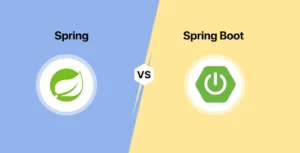In today’s technology-driven world, creating web services that can be accessed over the internet is a fundamental aspect of software development. Representational State Transfer (REST) has become the standard architectural style for designing networked applications. Spring Boot, a part of the larger Spring Framework, is a powerful and popular choice for building RESTful APIs in Java. In this tutorial, we will explore how to create RESTful APIs with Spring Boot from scratch.
Prerequisites
Before we dive into creating RESTful APIs with Spring Boot, make sure you have the following prerequisites:
- Java Development Kit (JDK): Install the latest version of JDK on your system.
- Integrated Development Environment (IDE): You can use Eclipse, IntelliJ IDEA, or any other Java IDE of your choice.
- Spring Boot: Ensure you have Spring Boot installed, or you can use the Spring Initializr, a web-based tool for generating Spring Boot projects.
Step 1: Project Setup
Let’s begin by setting up a new Spring Boot project. You can do this by using the Spring Initializr or by creating a new Spring Boot project in your IDE. Select the following options:
- Project: Gradle or Maven
- Language: Java
- Spring Boot Version: The latest stable version
- Group: Your project’s group (e.g., com.example)
- Artifact: Your project’s name (e.g., my-rest-api)
- Dependencies: For a basic REST API, select “Spring Web.”
Once the project is created, open it in your IDE.
Step 2: Create a REST Controller
In Spring Boot, RESTful APIs are built using controllers. These controllers handle HTTP requests and define the API’s endpoints. Create a new Java class for your REST controller. Here’s a simple example:
@RestController
@RequestMapping("/api")
public class MyRestController {
@GetMapping("/hello")
public String sayHello() {
return "Hello, world!";
}
// Add more endpoints here
}
In this example, we’ve defined a controller named MyRestController with a single GET endpoint that responds to requests at /api/hello. It returns a simple “Hello, world!” message.
Step 3: Build and Run the Application
Now, let’s build and run the Spring Boot application. Most IDEs provide options to run the application directly. You can also use Gradle or Maven from the command line:
For Gradle:
./gradlew bootRunFor Maven:
./mvnw spring-boot:runYour Spring Boot application will start, and you can access your API at http://localhost:8080/api/hello.
Step 4: Testing the REST API
To test your REST API, you can use tools like Postman, cURL, or even a web browser. Open your browser and navigate to http://localhost:8080/api/hello. You should see the “Hello, world!” message.
Step 5: Expanding the API
Creating a simple “Hello, world!” API is just the beginning. You can expand your API by adding more endpoints, integrating with databases, handling request parameters, and much more. Spring Boot provides a wide range of features and libraries to help you with these tasks.
Conclusion
Creating RESTful APIs with Spring Boot is straightforward and powerful. You can build robust APIs to serve web and mobile applications, perform CRUD (Create, Read, Update, Delete) operations, and much more. Spring Boot’s extensive documentation and active community make it an excellent choice for developing RESTful services in Java. With this tutorial as your starting point, you can explore and implement more complex APIs tailored to your specific needs.






